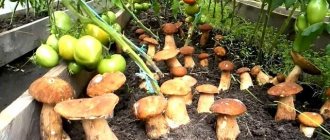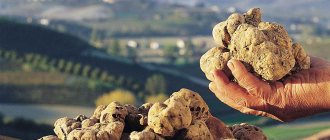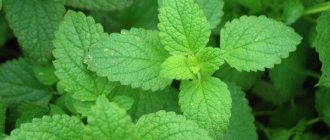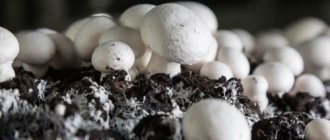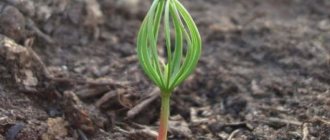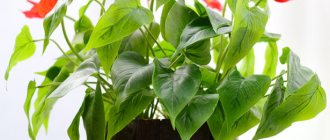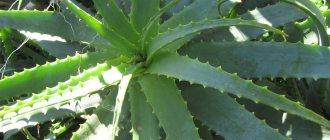Home mushroom growing, advantages of the hobby
Despite the fact that you can buy mushrooms in bulk in the store, growing champignons at home for beginners has its advantages. Firstly, the hobby captivates you with its process, allowing you to observe the germination of a mushroom culture from scratch. Secondly, by following all the recommendations and advice, you can provide yourself with an affordable harvest, which will always be at hand if necessary. Thirdly, knowing the entire history of champignon cultivation, the owner of a garden plot will have reliable information about the absence of harmful additives and chemicals in the fruits, which often end up in purchased mushrooms during transportation and improper storage.
In addition to the advantages listed above, the most important thing is the rich content of vitamins, minerals and trace elements. Each champignon contains a huge amount of vitamins B1, B2 and C, protein, nicotinic and pantothenic acid, phosphorus, calcium and iron. The rest is pure water, which the body needs for the full functioning and functioning of internal organs.
Another integral advantage is the refined aroma and pleasant, memorable taste, which allows you to prepare many dishes of Russian cuisine. First and second courses, appetizers and pates, preservation in any form, turn out tasty and, most importantly, low in calories.
Selection and preparation of premises
To start growing champignons, you first need to think about the room. It should be closed, cool, but heated during the winter months. In summer, you can grow mushrooms in open ground, when the ground warms up and the air temperature reaches 20 degrees.
Most often, gardeners settle on 5 room options. This could be a basement, barn and garage, cellar and even a greenhouse.
If a mushroom picker is going to grow mushrooms at home for sale, he should know that year-round care involves observing the temperature regime. The temperature should not fall below 15 degrees. The best option is between 17 and 20 degrees Celsius.
In the summer, you can transfer soil contaminated with mycelium to the garden. This approach will make care easier by replacing artificial conditions with natural ones. Open air will become an analogue of systematic ventilation, and a little summer rain will maintain humidity.
Helpful information!
When preparing the room, do not fill the floor with concrete. It is much better if there is an earthen surface in the room that can retain heat.
Champignons can also be grown outdoors, as many experienced mushroom pickers do. True, in this case the risk of failure increases. Unexpected frosts can affect the number of champignons and even the beginning of their growth.
It is better to place the mycelium along the fence, behind the trees. Recommended parameters:
- trench bottom – from 35 to 45 cm;
- width – from 1 to 1.5 meters;
- total area – 1.5-2 meters.
- along the perimeter there is a small trench, the depth of which ranges from 20 to 30 cm.
What a novice mushroom picker needs to know
In addition to time and financial investments, a novice mushroom picker needs to have appropriate premises. It should be cool, dark and draft-free. An excellent option would be a cellar, basement, permanent garage, greenhouse or storage room. With the onset of warm weather, when the air temperature is around 20 ° C, champignons can be grown in your own garden plot. Indoor temperature should be maintained within +12...+20°C, with the required humidity - 65-85%. The soil temperature should be kept at +15...+17 °C.
The ability to grow champignons at home depends on the following factors:
- premises;
- substrate quality;
- mycelium (mycelium);
- temperature and humidity.
Ventilation is necessary in the room, since during development the mushrooms emit ammonia vapor and carbon dioxide. This does not affect the growth of mycelium, but during the formation of the mycelium, such an atmosphere slows down the growth of champignons and is harmful to human health.
Mushrooms don't need light. They can grow in complete darkness. But for maintenance work, adjustable lighting is necessary. The temperature is measured with an ordinary thermometer and regulated using heating devices (in regions with severe frosts), and watering is carried out with irrigation nozzles or using hand-held watering cans with a fine sieve.
The harvest depends on the quality of the mycelium (mycelium), which is evenly distributed over the entire surface of the nutrient substrate. It is the vegetative body of the fungus and consists of thin astringent threads with a characteristic mushroom smell. This is an important organ that is responsible for nutritional function and reproduction.
The right choice of high quality mycelium is 50% success.
How to buy quality mycelium
A beginner in mushroom cultivation should know what a quality product looks like. Good mycelium has a small fluffy white coating and clearly visible threads. It looks loose and smells damp.
It is difficult for a person without experience to grow mycelium on their own. At all stages, mycelium requires sterility and special equipment. A high-quality product is grown in laboratory conditions in three ways: by obtaining it from spores, by isolating it from a piece of the fruiting body, and through selection. For growing at home, seed material is produced from mushroom particles and sold in specialized stores and on Internet sites.
This meadow champignon mycelium is prolific and unpretentious, and its quality is time-tested. It is sold in bags (1-2 kg) or in liter jars. The taste and nutritional value are the same; the only difference is the color of the mushroom. It will be white or brown.
Content Rules
Growing champignons at home for beginners involves rules that must be followed. Among them:
- good ventilation;
- air humidification;
- absence of drafts in a closed space;
- a ventilation hole that does not allow cold air to pass through and is closed from the penetration of midges, mosquitoes and other pests;
- heating in the cold season;
- lamps are necessary for the convenience of the mushroom picker; they have nothing to do with germination. Mushrooms do not depend on photosynthesis; they are able to bear fruit even in pitch darkness.
How to disinfect a room?
Champignons do not get along with other mushrooms in the same area. Therefore, before you start growing at home, you should treat the room from scratch. Before cultivation, it is necessary to thoroughly disinfect all surfaces with a disinfecting solution. The surface is treated from floor to ceiling with formaldehyde, and the remaining surfaces are treated with copper sulfate solution. A sulfur bomb is made with the help of sulfur, and the entire area is covered with bleach using a spray gun or garden sprayer.
One or two days after disinfection, the room is ventilated and the cultivation process itself begins.
Mushroom harvest
Champignon
They bear fruit in waves and ripen several times. During fruiting, harvesting is carried out 3 to 7 times. If you follow certain rules when harvesting, you will prolong fruiting and not damage the mycelium.
Mushrooms are not cut with a knife, but twisted by hand. The remaining holes are carefully sprinkled with earth and sprayed with water.
The champignons are harvested when the film connecting the stem and the edges of the cap is still stretched and has not yet broken. If the film is torn, the mushroom is overripe.
Fruiting lasts from 8 to 14 weeks. The interval between waves is 4-7 days. Most of the harvest is harvested from the first 3 waves, about 70%.
Do not eat flabby and overripe mushrooms; they can cause poisoning.
If after fruiting you are planning a new planting of mycelium, you need to change the compost to a new one and disinfect the room.
Mycelium: purchased or self-grown?
The simplest method is to purchase a ready-made substrate contaminated with oyster mushroom spores. Many professional mushroom pickers and factories that grow champignons from scratch sell ready-made grain mycelium. It is not so expensive compared to other breeds and the time that needs to be spent on sowing and additional processing.
If a novice mushroom picker decides to buy mycelium for further germination at home, it is worth paying close attention to its appearance. Its color should be a yellow-orange hue, and the grains should not include green and black colors. The smell should not be negative, one might even say intimidating.
Important!
If you want to start growing champignons professionally, you shouldn’t buy a large batch of mycelium at once. It is worth carefully familiarizing yourself with the supplier, weighing positive and negative reviews. After the decision has been made, it is worth taking a minimum amount of mycelium for testing. This approach will help avoid wasting time and money.
If you decide to grow mycelium yourself, you should familiarize yourself with a step-by-step diagram that can make the process easier.
Instructions for creating grain mycelium of champignons:
1) pour 15 kg of grains into any convenient container and fill with 20 liters of water; 2) place the poured substrate on the stove over low heat; 3) bring to a boil and leave to simmer for 40-50 minutes; 4) make sure that the grains do not boil; 5) drain the water and let the grain dry for several hours; 6) fill the jars with the finished material; 7) take plastic lids, make holes in them and put them on the jars; cover the holes on the lid with cotton wool and place in the autoclave for 25-40 minutes; 9) use the holes to place the mycelium in the jar; 10) place the jars in a thermostat with a temperature of 22-25 degrees; 11) wait until the mycelium germinates and fills the substrate.
2) place the poured substrate on the stove over low heat; 3) bring to a boil and leave to simmer for 40-50 minutes; 4) make sure that the grains do not boil; 5) drain the water and let the grain dry for several hours; 6) fill the jars with the finished material; 7) take plastic lids, make holes in them and put them on the jars; cover the holes on the lid with cotton wool and place in the autoclave for 25-40 minutes; 9) use the holes to place the mycelium in the jar; 10) place the jars in a thermostat with a temperature of 22-25 degrees; 11) wait until the mycelium germinates and fills the substrate.
Classic recipe for champignon mycelium
Growing champignons at home for beginners includes 6 main ingredients:
1) horse or bird manure; 2) dry gypsum; 3) fertilizer (you can consult with a sales consultant when purchasing); 4) chalk; 5) dry straw; 6) alabaster flour.
For 10 kg of manure you need to take 400 g of fertilizer, 20 kg of straw, 1.5 kg of dry gypsum and 1 kg of chalk.
Substrate in beds, placement rules
To start growing at home, in a country house, basement or any indoor space, you should follow all the step-by-step instructions listed below.
1) First, you should make a rack with a bottom and sides that exceed the depth of the boxes by 20-50 cm. 2) The boxes (one or more) must be covered with substrate and placed on the shelves. 3) If the floor of the room is not poured with concrete, but covered with earth, the growing beds can be placed directly on the ground.
Substrate
To develop, the mycelium needs a special loose substrate. It is prepared from:
- chalk and carbamide (urea) – 2.5 kg each;
- straw – 50 kg;
- superphosphate – 1 kg;
- gypsum – 4 kg;
- fresh manure – 50 kg.
Related article:
Mushroom picker's calendar - when to pick which mushrooms
For an area of 3 sq.m. the amount of ingredients is doubled.
Horse manure is best suited for preparing the mixture. It can be replaced with cow's milk, but the result will be worse. If chicken manure is used, then urea should be excluded from the recipe.
Optimal acidity is 7.3-7.5 pH. Prepare the substrate under a canopy on a concreted area (if there is none, you can cover the surface with a thick film). The straw is filled with water, placed in containers of a suitable size, and left for 2 days. Dry ingredients are mixed until smooth.
Compost is prepared by laying out in layers:
- prepared straw;
- powder;
- manure;
- another layer of powder mixture.
The result should be 4 layers of manure and straw (each layer of straw is moistened). The width/height of the stack is about 1.5 m. After 3-5 days, the temperature of the molding heap reaches 70°C. At this moment, mix it with a pitchfork, adding water at the same time (it should moisten well, but not leak out). The procedure is repeated every 4-5 days for a month.
Related article:
Breeding and growing oyster mushrooms
The finished compost acquires a dark brown color, does not have a sharp ammonia odor, does not stick to the skin when squeezed in the hand, leaves a wet mark, but water does not flow from it.
The nutrient substrate is laid out in boxes, which are placed on shelves, or placed in bags. When grown on a plot, they fill a hole covered with cellophane. Compact the compost, wait until the temperature drops to 23-25°C and only then begin planting.
Read more: How to make compost for champignons
Growing champignons, varieties
Like any other mushrooms, champignons can be grown at home, in a summer cottage, in a basement, in a garage, or even in a greenhouse. Some gardeners even manage to engage in mushroom farming outdoors, risking being left without a fertile harvest. You can find out about each of the popular methods below.
From scratch in the basement in bags
Many mushroom growers, even those with extensive experience in germinating champignons, use the option of growing mushrooms in basements. A closed room is in most cases heated and does not need additional modification. All that remains is to install the humidifier and build a rack.
It is best to grow champignons in plastic bags. This method is the most practical for moving from one place to another.
The peculiarity of this method and its disadvantage is that during the process of mushroom appearance, the bags are transferred to a well-ventilated place. The change of location is extended for several weeks until the mushrooms are collected. Afterwards, the bag with the substrate is returned to its original place to begin the sequential process from scratch again.
In the garden
To start growing in beds, it is worth preparing the soil in the autumn. To do this, you should collect the top part of the soil from 15 to 35 cm, cover the bare area with a small layer of expanded clay, and cover it with sawdust or mowed grass.
At the end of spring, the soil should be cultivated, small holes made and infected with mycelium. If the mycelium is grain, it is scattered and compacted to retain more moisture.
Fruiting begins when the temperature reaches 23-27 degrees. Mushrooms have time to grow in 10-14 days.
On the balcony
Growing on a balcony is no different from the basement method. The only difference is the additional insulation of the room. The balcony should be glazed by insulating the brick walls using glass wool or ursa material.
In addition, there should be ventilation and convenient shelving.
Other growing methods include block and container methods. They allow you to grow champignons in a greenhouse and even a barn.
List of diseases and pests:
- mummies;
- mushroom mite;
- rotting;
- mushroom midge;
- mold (any type).
- When a mummy appears, the mycelium is removed along with the substrate.
- At the first sign of a mushroom mite, the mushrooms are sprayed with a metaphos solution.
- You can always get rid of fungus midges using chlorophos.
- Formalin will help against rot and mold.
The process of mycelium formation
Immediately after planting, the humidity level should be at the level of 75-90% (moisten the substrate through burlap using a sprayer). The optimal temperature is 25-27°C (it is not advisable to lower or increase it).
After 1-2 weeks, white cobwebby threads should appear. Initially, they cover local areas around the planted mycelium, then spread to the entire surface of the substrate.
The threads are sprinkled with a moist substrate combining earth, limestone, peat (4:1:5), or peat and chalk (9:1). After 3-5 days, the temperature is reduced to 12...17°C (a thermometer is installed to control the temperature in the room, regulation is ensured using air conditioners/heaters).
The substrate is regularly moistened, since when the humidity level is less than 60%, the yield decreases.
The shelving and floor are sprayed with a spray bottle to increase the humidity level or the room is ventilated if it is necessary to reduce it. Indicators are monitored using a hygrometer.
Related article:
We grow porcini mushrooms on our site
Business profitability
Even a tasty offer has both pros and cons. Growing mushrooms as a business is only profitable if there is demand in the market. Therefore, before opening your own small mushroom farm, it is worth finding out how many competitors there are in the city. If there are many of them, they have extensive experience and a good customer base, it is worth thinking about what you can offer to potential buyers so that the offer interests them more than the promotions and established price list of competitors.
In addition to assessing competitors, it is worth considering potential costs and losses in the first months. The list of expenses includes:
- renting or building suitable premises;
- purchase of mycelium, equipment and other things;
- disinfectants for cleaning the premises;
- construction of ventilation;
- purchasing a humidifier and heater;
- waste on sanitary examination of finished products.
The approximate cost is 100 thousand rubles. When selling the entire harvest, the proceeds will be 200 thousand rubles, that is, net income = 100 thousand. However, it may be less if there is no demand, and an employee with a prescribed salary is hired for the job.
In the process of mushroom growing, other penalties may arise. Growing champignons for beginners at home from scratch for sale is a rather expensive undertaking that takes a lot of time and effort. Therefore, a hobby is one thing, but a business is completely different. And if you want to try it, you should start by sprouting it for yourself.
